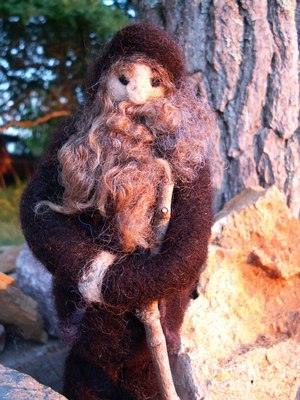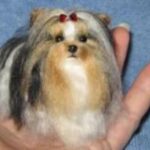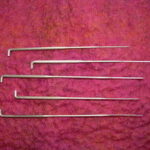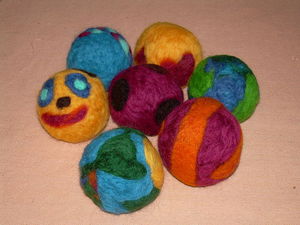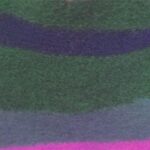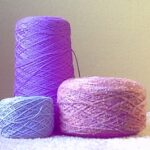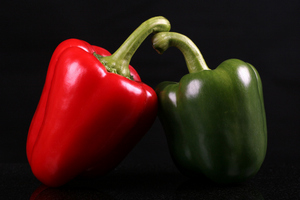Needle felting has been used on an industrial level for decades but it has only been embraced as an art form relatively recently. Needle felting involves using a specially designed needle to work animal fibers into felt. While wool from sheep (wool roving) is most often used other animal fibers such as alpaca hair, llama hair, and even dog hair will work to make felt! Felting with a needle is possible because felting needles are barbed. These barbs catch individual fibers and push them into other fibers where they catch on one another and form a solid mass. Felted objects can be utilitarian like hats and clothing or they can be decorative and just for fun. Felted accessories like purses are growing in popularity and who can resist a little felted animal to add to your collection?
Felting needles can be used to make animal fibers into a flat fabric-type felt, hollow three-dimensional objects, or solid three dimensional objects like human and animal figures. Combine several simple forms to make complex designs, clothing, you name it. Your imagination is your only limitation!
Felting itself is actually a very old art. Traditionally, however, felt was produced by wetting the fibers and working them together rather than using a needle to work them together. The result, however, is basically the same. The exception is that wet felted items are typically flat while needle felted items can be either flat or three dimensional. Animal fibers, particularly wool fibers from sheep, are scaly when viewed under a microscope. When these fibers are pushed into one another these scales cling together, a characteristic that can be taken advantage of using either wet felting or needle felting.
To take advantage of the special characteristics of animal fiber that allow it to be felted, really all you need is a felting needle. It’s nice, however, to have some sort of foam surface to work on so that your needle won’t hit the hard tabletop, or worse yet your hand or leg, and break off. Even a large sponge can be used for this purpose. Keep in mind that when fibers are needle felted over three-dimensional forms, utilitarian objects like hats can be produced.
The easiest material to acquire, unless you happen to have a llama or an alpaca out in the back forty of course, is probably sheep wool. It can be purchased commercially as wool roving or wool top. The wool acquired this way has been processed to take out the dirt and much of the lanolin then carded to align all of the fibers in one direction. Wool roving is particularly easy to work with and comes in every color of the rainbow! Utilizing natural colored unprocessed fibers can have its advantage in certain applications as well. The beard in the photo of the needle-felted shepherd is from fiber straight off the sheep!
While wool is certainly the most common fiber being worked with by needle felters, other fibers are certainly an option that should be considered. Fibers like llama, alpaca and even angora rabbit are less commonly available but they are gaining in popularity for needle felting and other fiber arts and are being seen more commonly in shops catering to spinners and the like. Alpaca fiber is, as might be expected, the most expensive and angora fiber would probably rank second. Llama fiber is more expensive than wool but all are quite affordable.
First, experiment with making a flat piece of felt. Peel off a layer of wool and lay it on your flat foam surface. You want a swatch of fiber that is about one-eight of an inch thick and maybe a couple of inches square. Start gently poking it with the felting needle. Be very careful not to poke yourself though because these needles are exceptionally sharp and they really do hurt! Make sure you poke straight down into the fiber rather than at an angle so that the needle will be less likely to break off. As you work the fibers you’ll pick up a fast rhythm. The idea is to poke repetitively in slightly different locations around the swatch of wool fibers.
As you work you’ll notice the fiber starts to condense tightly into one another. The sheet of fiber may become thicker in some areas, however, than others and a hole might even start to form. If that is the case just add a pinch more wool to the thin area or maybe fold over some of the ends of fibers that are hanging out the sides of the swatch and needle felt them down.
Keep working consistently over the flat surface of your fiber and before long you will have a nice flat piece of felt! It will probably be partially embedded in your foam though so you’ll have to peel it off. Do it carefully but don’t despair if it tears some as you remove it from the foam. Just add some more wool to the torn spot and needle it to patch it right up. Then, turn your piece over and needle felt the back.
If you want to make something like a hat cut a piece of foam in the shape of the object you want to create. Needle felt the fiber around the foam making sure you leave a big enough opening in the felt that it can be peeled off the foam when you are finished without destroying the desired shape.
Making a solid three dimensional needle felted object like a person or an animal is in some ways easier than making a flat piece of felt. Although it is best, if you work carefully you don’t even have to have the foam base to work on because you are only partially poking into the wool mass and there is less danger of you poking into a hard table top and breaking your needle when doing three-dimensional pieces.
To start a three dimensional figure like an animal or human shape, instead of spreading your fibers out flat, ball them up into a sphere. Then start to work your needle around the surface of the sphere, turning it slowly as you work. The more you work the more condensed the sphere will become. Notice if you work your needle in one area more than another you create a recessed area. You can use this to your advantage to create detail on your piece. Jab more in one area, for example, to make the mouth and eyes of a person or animal. Notice how the eyes in the photograph of the needle felted shepherd are recessed into the face.
To add more features to your three dimensional animal or person figure you can create shapes such as noses, ears, and tails separately and then needle felt them to your main body. Make sausage shaped pieces for the legs, smaller sausage-shaped pieces for the arms, and an even smaller sausage shaped piece for the nose. Attach each to the main body by needle felting them in at the attachment point and then detail them in as desired. Once you attach the nose, for example, use your needle to work in the details of the nostrils. You can incorporate different colors of fiber to add more detail. The beard of the needle felted shepherd is felted only at the point where the fibers attach to the face.
Needle felting is great fun and it is no surprise that it is one of the fastest growing fiber arts. Needle felting can be used to create unique items for the home or even clothing. As you work you will pick up many techniques that will make needle felting a breeze. The idea is to just keep playing with needle and whatever animal fiber you choose until you get the hang of it. Before long you will be a true needle felt artist!
